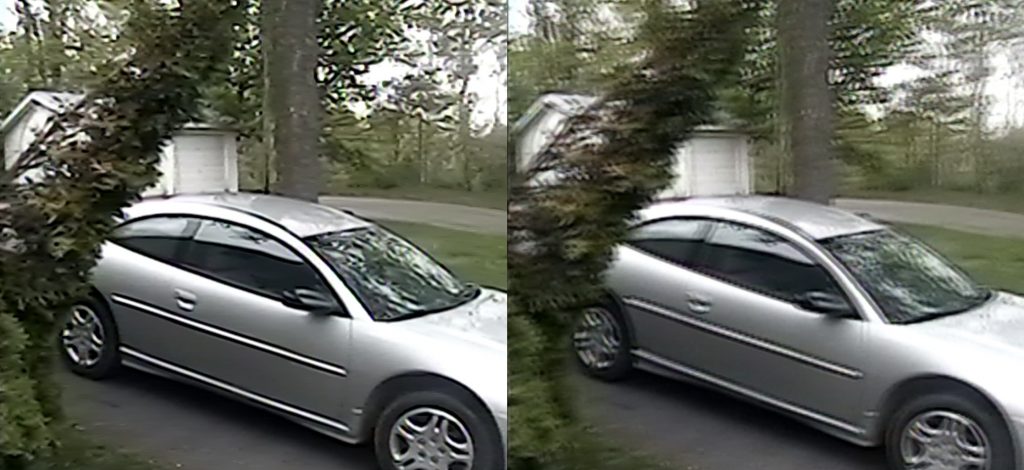Anyone who has researched a little bit about video has seen the term “interlaced frame” thrown around. Another good question might be, “What are jaggies?”
One of the most forgotten aspects of legacy video duplication to digital is “de-interlacing.” From the very inception of television in the 1940s until about the year 2000 it was necessary to have interlaced frames.
Where Have We Been?
We all know that movie film is merely a collection of still photos. When played in rapid succession (24 frames per second) the illusion of motion is created. Television and video are the same way but at 30 frames per second. However, legacy video frames are composed of two fields rather than a simple picture–an “interlaced” frame. The first field is the even lines and the second field is the odd lines. All modern TVs (post 2008) use a “progressive” scan technology–one field, one frame just like movie film.
When legacy video (interlaced) is played on a 1990s vintage TV, the TV is able to assemble the two fields with precision making the image razor-sharp because of the presence of temporal information. The same can be said of playing legacy video directly from a legacy camcorder into a modern progressive scan technology TV because the temporal information resident on the original magnetic tape is available.
What Does This Mean to Me?
A problem arises, however, when we introduce the middle-man–duplication to digital. When we merely download legacy interlaced video to digital field-by-field and transcode to DVD, the temporal information is lost. Modern TVs know how to assemble such interlaced fields to make a full-frame but all they can do is make an educated guess.

Keeping this really simple, the key to recognize and what makes this important is that the two fields of an interlaced frame have a time difference between them. Therefore, when both the camcorder and subject have little motion the alignment of the two fields will pose no problem. When either of them moves rapidly (i.e. camcorder jerking or subject moves rapidly) we will often see “jaggies” most noticeable where there are straight lines such as the car in the figure above. From a distance, the picture merely looks a little out of focus. However, closer inspection reveals a Venetian blind-like effect which is most noticeable where there are straight lines.
Seeing is Believing
Please view the video below for a much more revealing understanding of what interlacing and jaggies are all about and what difference it means to the quality of your video duplication to digital you are passing down to generations yet unborn.
How Do I Obtain This Incredible Quality?
So, what is the fix? Alignment of the fields must be done while the original temporal information is available. That can ONLY happen during the real-time download of the video footage from the original tape. As the reader may have guessed, we at W. Cardone Productions offer this precision field alignment as a standard process with all legacy video media duplicated to digital. To our knowledge, nobody else offers this at the consumer level.
What, a bonus?
What’s more, we go the next step as well up-resolving the standard-definition video to 1080p, But that is not all. The 1080p upgrade is not a big difference but it is definitely noticeable nevertheless. MP4 video is up-loadable to your smartphone or other mobile device. For a limited time, we are offering complimentary mp4 versions of all customer video with each project.
Don’t wait. Call or eMail TODAY.
